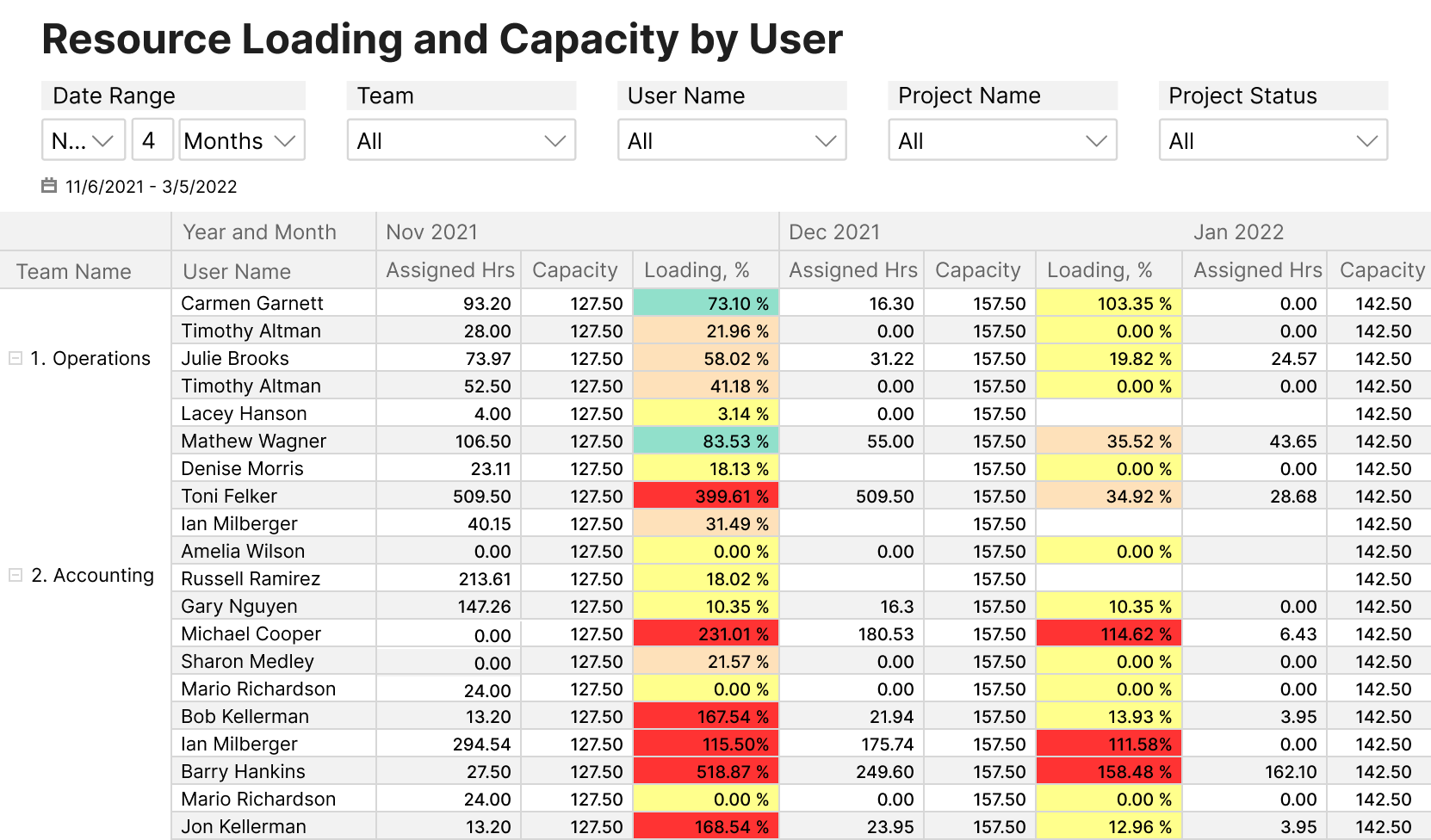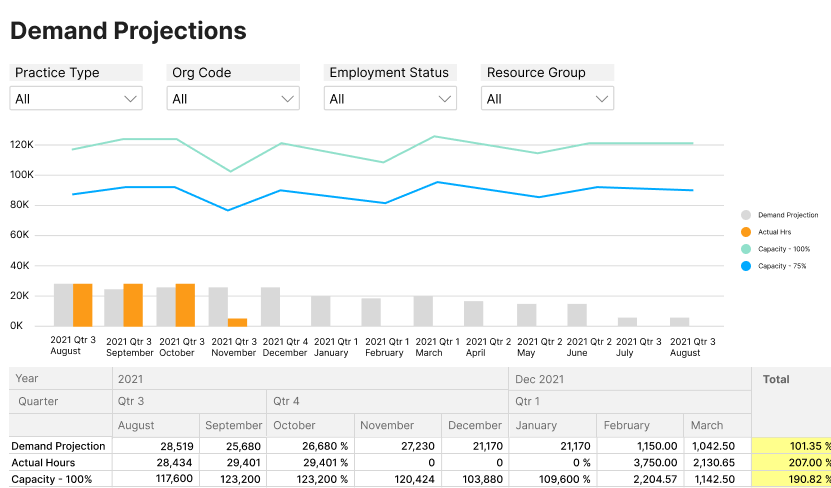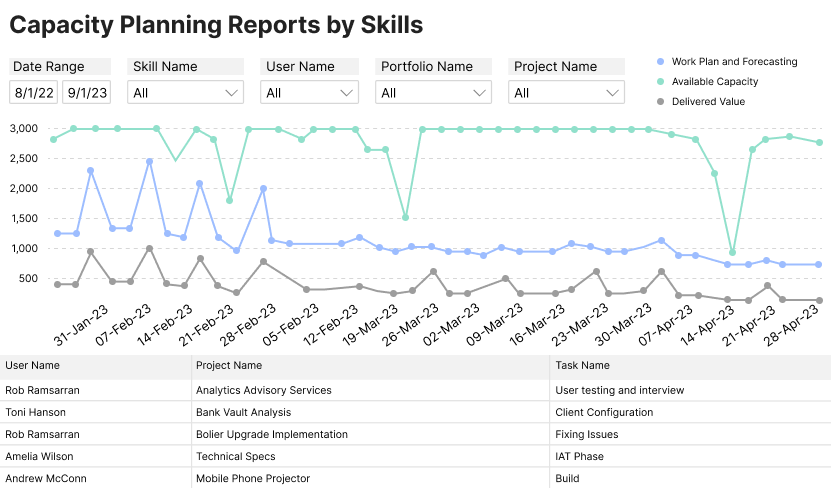Definition
Resource Capacity refers to the total volume of work that can be done by an organization’s workforce within a given timeframe. It considers the number of employees, their skill levels, their working hours, and their productivity rates. Essentially, it quantifies the potential output of the workforce. A clear understanding of resource capacity is crucial for companies as it provides insights into whether the existing staff can meet current and future demands or if there’s a need for hiring additional personnel or improving productivity.
Resource Capacity Planning refers to ensuring that resources are available when needed and utilized to their fullest potential while avoiding overuse or underuse.
Simply put, capacity planning is a process that allows you to determine how much work can be done with the time and resources available to your team. When capacity planning, your goal is to plan so accurately that you can anticipate what your project needs and add resources on time.
Why is resource capacity important?
Proper resource capacity planning and management are crucial to the success of any organization, especially a professional service firm. In engaging in capacity planning, a business can ensure that they have the resources and expertise needed to meet current and future demand, while also maintaining optimal resource utilization and profitability.

It is imperative to understand the current and future team‘s capacity in order to know if and when the company can take on new business.
How to calculate resource capacity?
Calculating resource capacity involves a few distinct steps:
- Identify the Workforce
Identify the total number of employees who are contributing towards accomplishing the tasks or projects. - Determine Workforce Availability
Next, establish the total available working hours for each employee. This would typically consider their contracted hours while deducting breaks, leaves, or off-days. - Gauge the Work Demand
Understand the total volume of work required. This could be the total hours required to accomplish a task or set of tasks. - Capacity Calculation
Now, the capacity can be calculated. If, for example, an employee is available for 8 hours a day, and the task requires them for 10 hours a day, then your people resource capacity is 80%.A commonly used formula to calculate people resource capacity is:
Resource Capacity = (Number of employees x available time per employee) / Work
This calculation provides a clear insight into whether the existing workforce can meet the project demands, or if there’s a need for additional hiring or productivity enhancements. However, this calculation can now be automatically made with the help of resource capacity planning software, such as Birdview PSA.
Capacity management process
Assessing the demand for services
A consulting firm may use historical data to analyze the demand for its services, taking into account the existing hard and soft allocations, current sales pipeline, seasonal trends, client needs, and other factors. Based on this analysis, the firm can project future demand and plan its staffing needs accordingly.

Managing utilization rates
To optimize resource utilization, a consulting firm may set target utilization rates for its consultants and employees. These rates reflect the percentage of time that specialists are expected to be billable (i.e., working on client projects), and can be adjusted as needed to ensure that the firm is making the most of its resources.
Balancing staffing levels
When demand for services fluctuates, a firm may need to adjust its staffing levels to maintain optimal resource capacity. For example, if demand is expected to increase in the coming months, the firm may need to hire new employees or bring on additional contractors to ensure that they can meet client needs.
Managing skill sets and expertise
A company may also need to plan for future demand by ensuring that they have the right mix of skills and expertise on their team. This can involve recruiting new employees with specific expertise, offering training and development opportunities to existing staff, or partnering with other firms to access specialized expertise.
